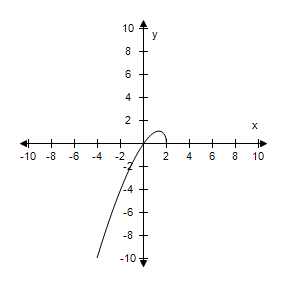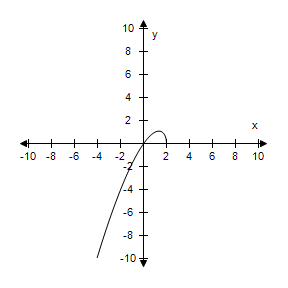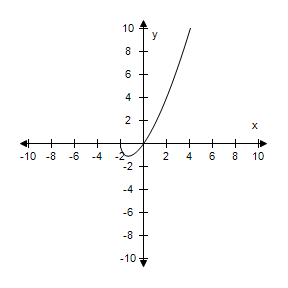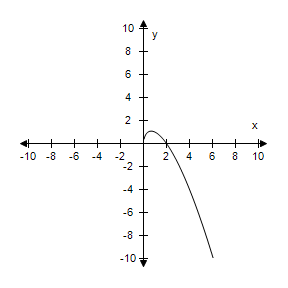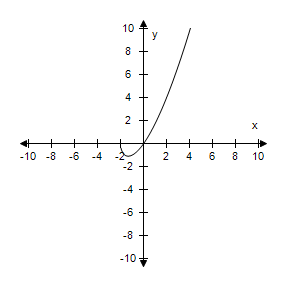Write interval notation.{ x ? -6 > x }
A. (-?, -6)
B. (-?, -6]
C. (-6, ?)
D. [-6, ?)
Answer: A
You might also like to view...
Identify the number as rational or irrational.-9.851111 . . .
A. Irrational B. Rational
Use the two steps for solving a linear programming problem to solve the problem.An office manager needs to buy new filing cabinets. Cabinet A costs $7, takes up 7 square feet of floor space, and holds 7 cubic feet of files. Cabinet B costs $8, takes up 10 square feet, and holds 15 cubic feet. He has only $94 to spend and the office has room for no more than 100 square feet of cabinets. He wants to have at least one of each type of cabinet. How many of each can he buy to maximize storage capacity?
A. 0 cabinet A and 13 cabinet B B. 10 cabinet A and 3 cabinet B C. 13 cabinet A and 0 cabinet B D. 3 cabinet A and 10 cabinet B
Use a graphing utility to graph the equation. Use a standard setting. Approximate any intercepts.
?

A. ?Intercepts: (0, 0), (-2, 0)
?
B. ?Intercepts: (0, 0), (2, 0)?
C. ?Intercepts:(0, 0), (-2, 0)
?
D. ?Intercepts:(0, 0), (-2, 0)
?
E. Intercepts: (0, 0), (6, 0)
?
From data compiled over a 10-yr period by Manpower, Inc., in a statewide study of married couples in which at least one spouse was working, the following transition matrix was constructed. It gives the transitional probabilities for one and two wage earners among married couples.

At the present time, 48% of the married couples (in which at least one spouse is working) have one wage earner, and 52%
have two wage earners. Assuming that this trend continues, what will be the distribution of one- and two-wage earner families among married couples in this area 10 years from now? Over the long run?
Please round the answers to one decimal place.
Percentage of one-wage earner families among married couples 10 years from now is __________%
Percentage of two-wage earner families among married couples 10 years from now is __________%
Percentage of one-wage earner families among married couples over the long run is __________%
Percentage of two-wage earner families among married couples over the long run is __________%
